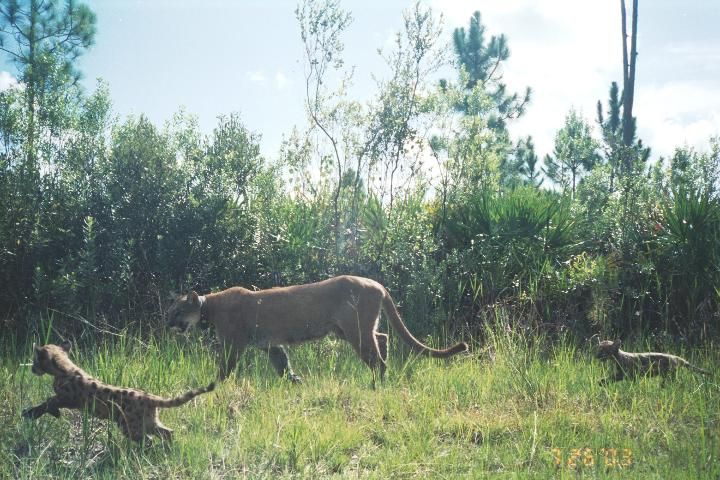
Credit: Florida Fish and Wildlife Conservation Commission
General Information
The Florida panther is a subspecies of puma. Pumas are also known as cougars and mountain lions. The Florida panther is listed as an endangered species under the Endangered Species Act. Scientists estimate that there are between 120 and 230 panthers in Florida. Today, the range of the Florida panther is restricted to Florida, with the highest concentration of panthers occurring in south Florida.
Identifying a Florida Panther
Panthers can sometimes be confused with bobcats, dogs, and coyotes. Below are some photos to help you determine whether you have seen a panther.
Body
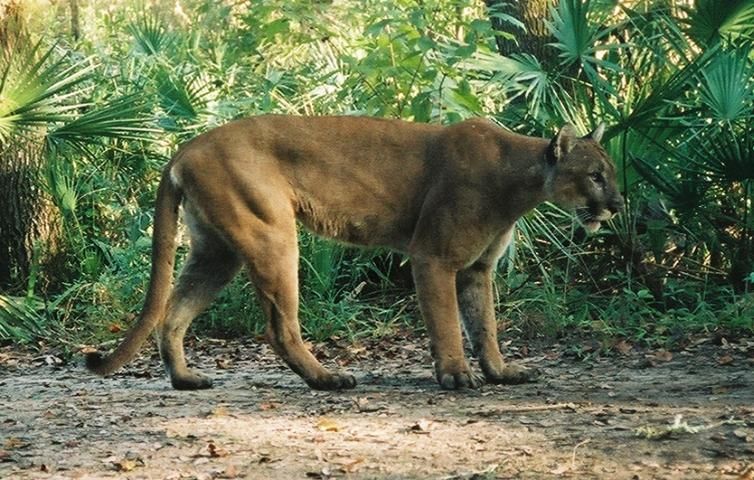
Credit: Florida Fish and Wildlife Conservation Commission
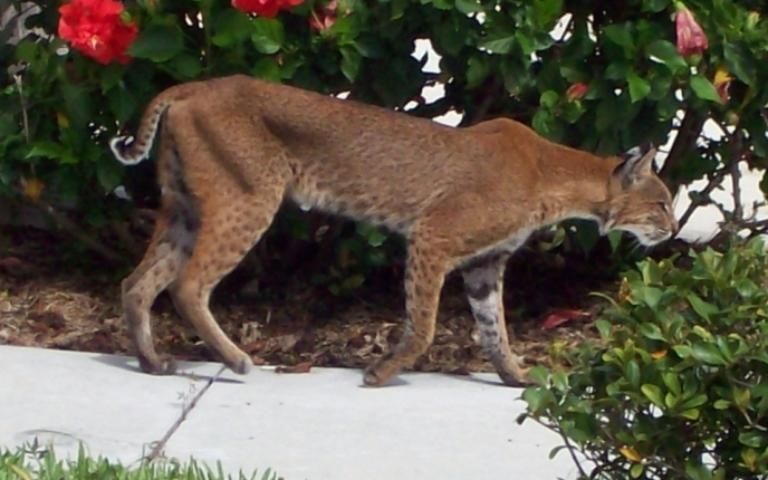
Credit: Bill Wilmeth
Panthers are 3 to 4 times larger than bobcats. On average, an adult male panther weighs 130 pounds and an adult female panther weighs 80 pounds. Panthers stand about thigh-high to an adult human. Bobcats rarely exceed 35 pounds and will only be about knee high or less to a person. Adult panthers are tan (Figure 2). Panther cubs under one year old are similar in color to adults but have spots on their fur. In contrast, bobcats have a red tinge to their fur. Their bellies tend to be white, and they have a spotted pattern on their fur even when they're adults (Figure 3). A very distinct difference between panthers and bobcats is the shape of their tails. A panther's tail is as long as its body and nearly touches the ground. By contrast, a bobcat's tail is shorter than the length of its body and often curls upward at the end, exposing a white underside that panthers do not have.
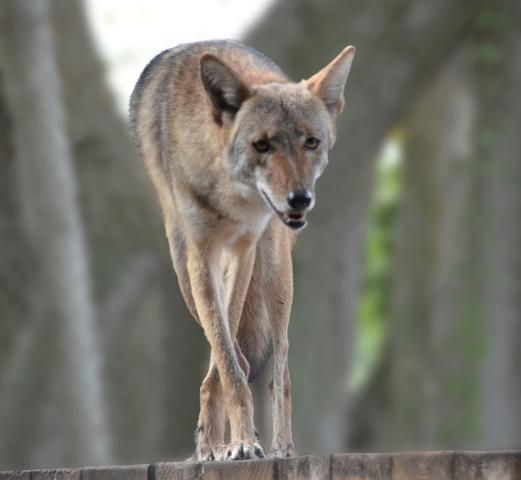
Credit: Florida Fish and Wildlife Conservation Commission

Credit: Florida Fish and Wildlife Conservation Commission
While coyotes are a part of the canid (dog) family, they can still be confused with the Florida panther. They are more similar in size to bobcats, weighing between 20 to 35 pounds. Coyotes tend to have grey fur, with patches of tan or brown (Figure 4a and 4b). The coyote has a longer, more slender face compared to the Florida panther, and a medium-length bushy tail.
Ears
If you only catch a glimpse of the animal from behind, a good way to differentiate between a panther, a bobcat, and a coyote is by looking at the shape and color of the ears. The back of a panther ear is black (Figure 5), while bobcats have distinct white spots on the back of the ear (Figure 6). The fur on the back of a coyote ear closely matches the rest of its coat (Figure 7).
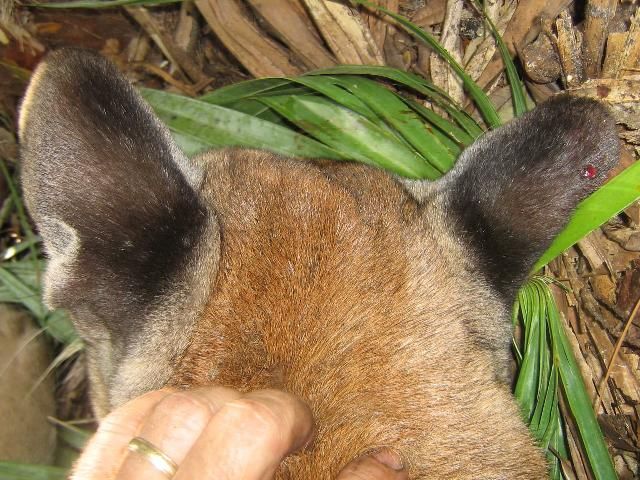
Credit: Florida Fish and Wildlife Conservation Commission
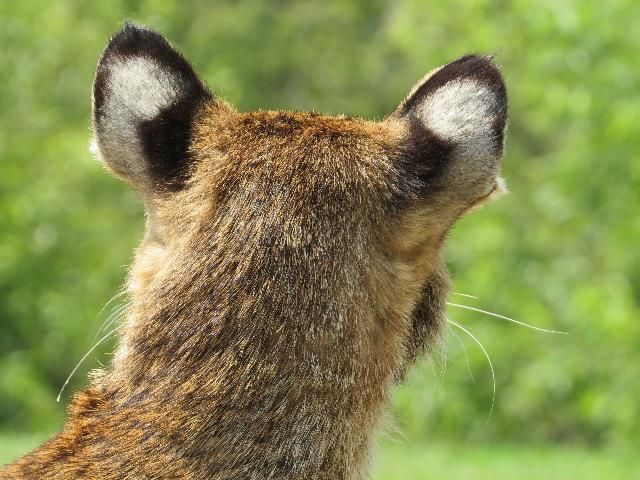
Credit: Florida Fish and Wildlife Conservation Commission
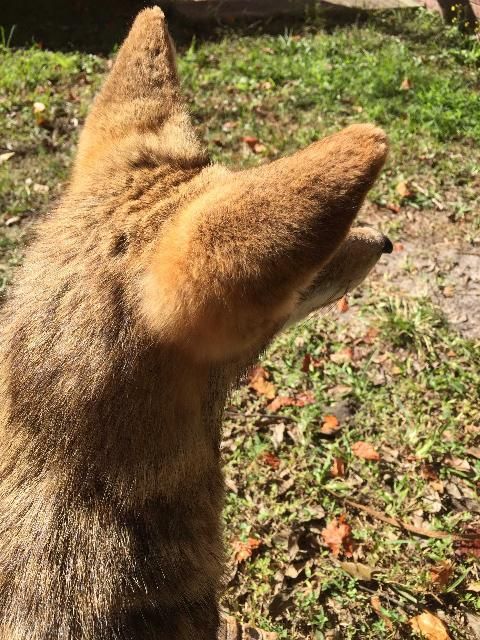
Credit: Florida Fish and Wildlife Conservation Commission
Tracks
One of the most reliable ways of identifying the presence of a panther is by looking at tracks left by the animal. The front paws of an adult panther leave tracks that generally measure 3 inches in length by 3 inches in width. The hind paws leave tracks that are slightly smaller. Both adult and juvenile panthers leave larger tracks than bobcats. A bobcat track is approximately half the size of a panther track.
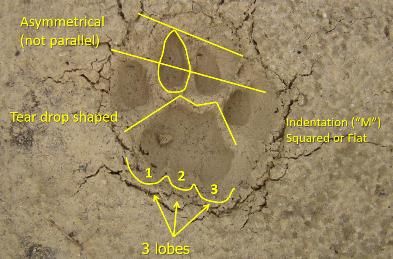
Credit: Florida Fish and Wildlife Conservation Commission
Figure 8 shows some defining characteristics of a panther track. Panther toes create a teardrop-shaped imprint. The arrangement of the toes is asymmetrical around the pad. Panther tracks (Figure 9) are most commonly confused with the tracks of dogs and coyotes (Figures 10 and 11). Panthers have retractable claws while dogs and coyotes do not. As a result, dog and coyote tracks typically include the imprints of claws, whereas panther prints usually do not have claw marks. The presence of claw marks for panther prints depends on what surface the animal was crossing and whether the animal was running at the time.
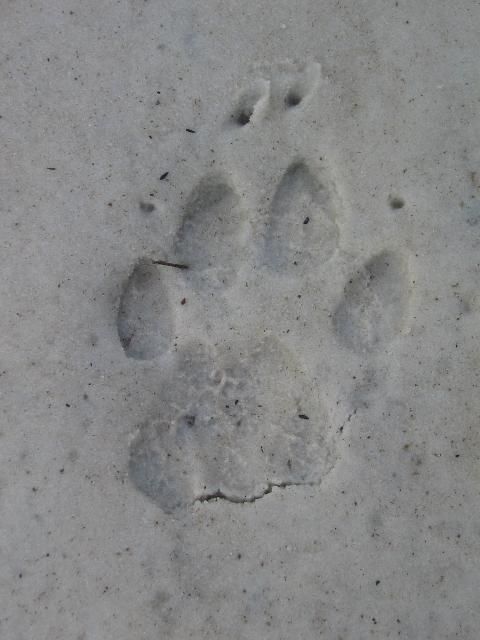
Credit: Florida Fish and Wildlife Conservation Commission
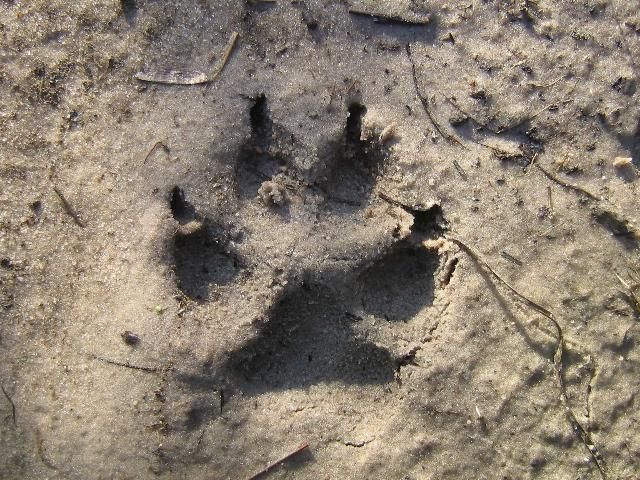
Credit: Florida Fish and Wildlife Conservation Commission
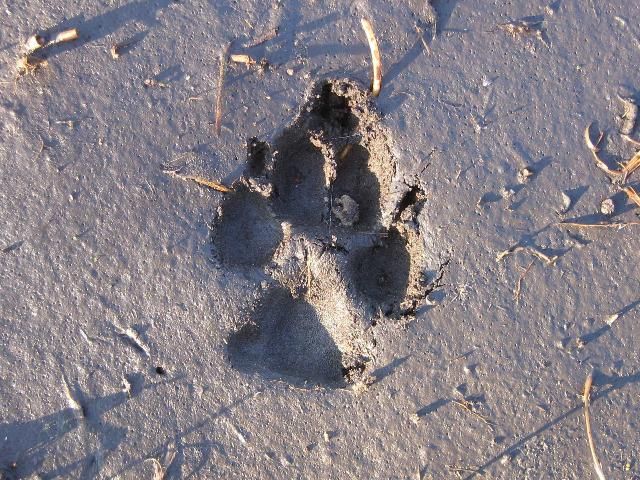
Credit: Florida Fish and Wildlife Conservation Commission
The pads of dogs and coyotes tend to be triangular in shape, whereas panthers have a trapezoidal shaped pad. Another key feature of a panther's track are the 3 distinct lobes at the base of the pad.
What to Do if You Have Seen a Panther
If you see a live panther, there is no need to contact either the Florida Fish and Wildlife Conservation Commission (FWC) or the US Fish and Wildlife Service. However, in the event that you identify a dead or injured panther, please contact the FWC at 1-888-404-3922.
Pictures of panthers or tracks can be submitted to the following website: https://app.myfwc.com/hsc/panthersightings/
For more information about living with panthers see: https://edis.ifas.ufl.edu/publication/UW399